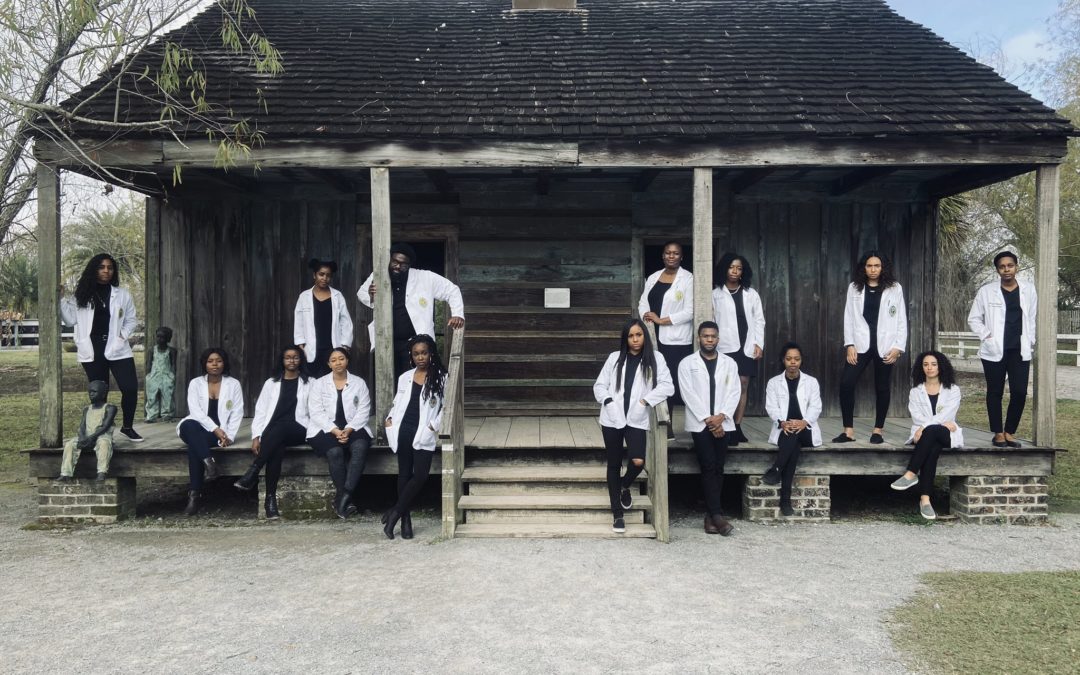A recent image of 15 black Tulane University medical students donning their white coats and posing in front of the former slave quarters of a historic Louisiana plantation went viral on social media. The accompanying words were poignant: “We are our ancestors’ wildest dreams.”
Snapped by photographer Abedoyin Johnson, the image quickly racked up tens of thousands of views on Twitter, Instagram, Facebook and othe social media platforms.
“I could just imagine our ancestors in heaven looking at us and being so happy,” Russell Ledet, a 33-year-old second-year medical student at Tulane, told NPR. “They’re saying, ‘Look at them. They’re doing so well. Their resiliency is shining.’”
Ledet organized the trip to the Edgard, La. Plantation for the Tulane chapter of the Student National Medical Association. He tells reporters that he never saw a minority physician growing up.
From 2017 to 2018, the number of black students enrolled in US medical schools rose by 4.6 percent, according to data released by the Association of American Medical Colleges. Much of that growth may be attributable to multiple medical industry organizations encouraging schools to boost diversity among their student recruits over the past decade. Earlier this year, US News & World Report released its list of the nation’s medical schools with the highest African American enrollment (excluding a number of predominantly black medical colleges, such as the Howard University College of Medicine and Morehouse School of Medicine, that didn’t submit the necessary data for inclusion on the list), along with each school’s percentage of the student body that is African American:
- University of Chicago Pritzker School of Medicine, 14.6 percent
- Ohio State University College of Medicine, 12.6 percent
- Michigan State University School of Medicine,
- University of Connecticut School of Medicine, 11.8 percent
- David Geffen School of Medicine at University of California, 11.8 percent
- Duke University School of Medicine, 11.5 percent
- College of Medicine at the Medical University of South Carolina, 11 percent
- College of Medicine at Florida State University, 10.6 percent
- Emory University School of Medicine, 10.6 percent
- Medical College of Georgia at Augusta University, 10.6 percent
As for that now-iconic photograph, Ledet hopes it will inspire new generations of African Americans to enter the medical field.
“We are aware of our position and what we mean to a whole lot of children,” he said. “A whole lot of undergrads are hoping and praying to get an interview for medical school, or even somebody to just look at their application. We’re here as living proof that it’s possible. If we can do it, anybody can do it. I hope this image will be posted in somebody’s classroom and some teacher will be able to say, ‘Every last one of those people up there is a practicing physician.’”
We here at WOLFPACC encourage any efforts to increase diversity at the nation’s medical schools and in throughout the industry. If you’re looking to boost your competitiveness in your medical studies and career, consider enrolling at WOLFPACC for tailored, intense personal tutoring and courses designed assure you’ll ace your USMLE and COMLEX exams on the first try. Call 904-209-3140 to speak with an enrollment specialist today.





